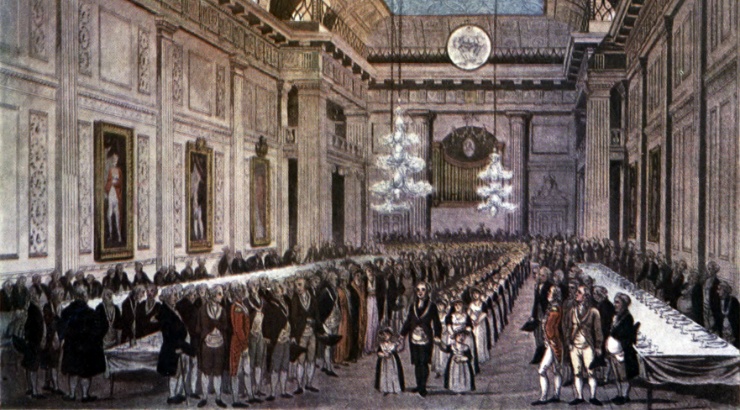Ever since man took his first steps to evolution and left behind his condition of ignorance, he has had the capacity to remember and a desire to tell his experiences to his fellow creatures. In other words he has always felt the need to pass down the wisdom that cascades from his forbearers’ actions.
The conquering nations needed to instil fear and respect in the hearts and minds of the subdued people. They needed to accomplish this so that they may have retained control over them and to achieve it they built permanent reminders of their military prowess and of the achievements of their political leaders.
At the same time the conquerors, finding the need to integrate the capitulated people , imposed on them their traditions, their religious belief and – where present – their legislation or rules of obedience.
In essence, they passed on their “Ars Vitae”.
But the absence of a common language and the rife illiteracy of the population lower classes, constituted an obstacle for that task. A new approach was required and so man devised a lexicon that could be easily read and understood by people at large.
That universal language was what we call “Symbolism”, an assemblage of images and signs that could tell a story , that would project an idea. Those symbols and images were being carved into wood or stone, printed on papyrus or sculptured on architectural structures that man had erected , having mastered the art of building otherwise called “Ars Structoria”.
The pyramids of Egypt, the Obelisks, the Roman and Greek Temples, the Cathedrals of the Christian world, the Mosques and other structures of the eastern civilisations, for example, all bear and convey messages.
So we can perhaps now see that “Ars Vitae” and “Ars Structtoria” are in a way intertwined.
Always on the tail of the Roman legions that fought for the greatness of Rome under the “Eagle”, were groups of craftsmen. Their duty was to erect bridges, build roads, assemble military machines and set up camps for the soldiers and their officers. Those guilds were constituted by men described as being organised, very skilled, devoutly religious and tolerant ; the latter two virtues being rather rare to find in men at that time.
Rome held the builders corporation in very high regard and even allowed them to perform their own rituals. Prof. Jose’ Benimelli writes in his Paper that craftsmen ‘s Guilds were not just craft bodies but also had a religious dimension.
I hope that I may have succeeded in showing why man has always had a desire to build in life, whether in deed or metaphorically speaking.
The nature of our Order is neither scientific nor it is abstract and beyond the grasp of our intellect. Freemasonry simply aims to instruct man to the “Ars Vitae” and the “Ars Structoria”, the latter being a term with which our Order is often known. Freemasonry teaches man to build his Soul or Temple, to aspire to a higher spiritual plane and to eventually deserve to be joining the Great Architect of the Universe in his sublunary abode.
Those of us who understand there is such a mission in life may be called Architects/Worshipful Masters, under whose guide the workmen/Freemasons execute his orders with the aid of individuals/Apprentices who are taking the first steps in the Art.
The construction of an edifice is achieved also by erecting walls, a process that in the old days was achieved by making bricks and stones into such a shape as to secure their perfect cohesion. The workmen assigned to the humble yet necessary task of cutting and chiselling those stones were called “Maciones” from which “Masons” derives.
Maciones became in great demand at the time that castles and cathedrals building fever took over in Europe and they set up Guilds everywhere they happen to be employed. In return for the skills they possessed and in appreciation of the virtues recognised in them , the Authorities employing them made those men “free” from paying taxes. This led those craftsmen to become known as “Free-Masons”.
After the Middle Ages, a great number of stonemasons Guilds became renown for erecting Cathedrals using a method which is still referred to in our time. It was the method applied for the erection of King Solomon’s Temple!
For the Modern Freemasonry May 1277 is an historical date. On that day , the first stone was laid for the construction of the new Strasburg Cathedral by the German architect Erwin Von Steinbach , after the old wooden framework had burned to the ground in 1176 . Strasburg is also the city where the first known Masonic Constitutions were issued in 1459 and today it is the official seat of the European Parliament, an Institution which is striving to build a different type of “Cathedral” , political in its framework but with widespread social and economic implications.
In 1703 the English Lodges eventually opened their doors to individuals of free and of good character who came from many different professions in life. It was thus that the term “speculative” was introduced to differentiate “modern” and speculative masons from the “operative” and “ancient” ones.
The Grand Lodge of England is the most senior in the world and it was founded in the year 1717 , on 24th June ( which is John the Baptist ’s Saint’s day). The Freemasonry’s Constitutions were assembled by James Anderson and approved on 17th January 1723 a date that , like June 24th , is equally important and significant for our Order.
By Aldo Reno
- His Majesty’s Servant , David Garrick Esq – Freemason ? - June 7, 2024
- Influencia de la Masonería en Chile - April 29, 2024
- Pomegranate in Freemasonry – its significance - March 11, 2024

